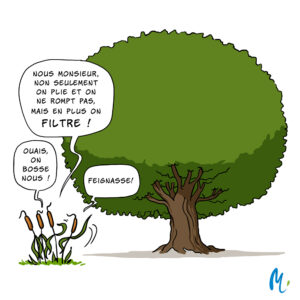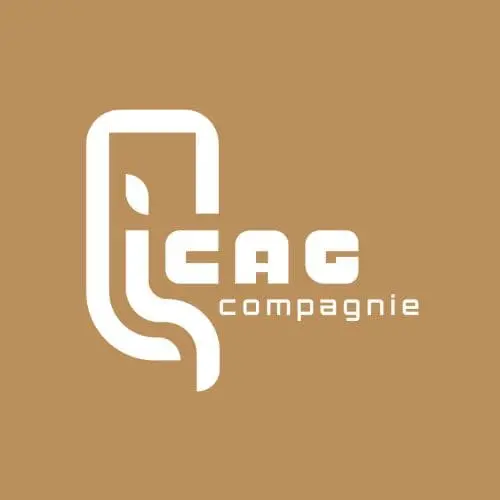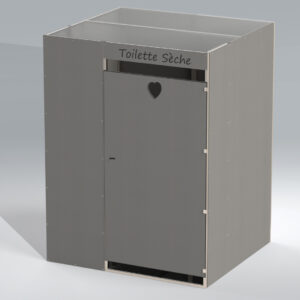 What is sanitation?
What is sanitation?
Sanitation serves the purpose of collecting wastewater, removing the pollutants it contains, and then discharging the treated water into the natural environment. The treatment of wastewater produces sludge that is subsequently reused or disposed of.
There are two main types of sanitation:
Collective sanitation and non-collective (or individual or autonomous) sanitation.
In this article, we will primarily focus on non-collective sanitation.
What is Non-Collective Sanitation (ANC)?
Non-collective sanitation refers to the treatment of wastewater that is not connected to the public sewage system, often colloquially referred to as the “sewer system.”
In France, it represents approximately 15 to 20% of the population, which is more than 12 million people, mainly living in rural areas.
There are approximately 5 million non-collective sanitation systems in the entire national network.
Non-collective sanitation systems are regulated and monitored by SPANCs (public services for non-collective sanitation).
The 4,000 SPANCs are under the responsibility of local authorities. These “public” services are either managed directly or delegated to private companies (primarily Veolia, Saur, and Suez).
As of today, around 3,000 municipalities are not yet covered by a SPANC.
The Obligations:
If your house is not connected to the public wastewater collection network, you must have your own individual sanitation system.
If, on the other hand, your house already has an individual sanitation system, maintenance checks must be carried out periodically, between 4 and 10 years, depending on the installations.
Since January 1, 2011, the seller of a property with non-collective sanitation has an obligation to provide proof of the system’s condition.
Current State of Non-Collective Sanitation in France:
More and more articles report on the deplorable state of non-collective sanitation systems.
According to an article dated 09/17/2017 titled “Storm in the Market of ANC Devices” on the reseauconfiance.org website,
8 out of 10 treatment devices are unacceptable!
Based on CIMAP data (established from diagnostics conducted by SPANCs), 63% of non-collective sanitation systems are non-compliant. 46% of installations are incomplete or malfunctioning, and 17% pose a health or environmental risk.
According to the observatory of data on water and sanitation services (SISPEA), 40% are considered compliant.
According to a spokesperson for autonomous sanitation industry professionals, citing a ministry study: “84% of the installations have non-conformities and require work.”
According to the head of the water and sanitation service at FNCCR (National Federation of Concession and Public Service Authorities): “…installations that pose a real pollution or nuisance problem…represent around 10% of cases” (Le Journal de l’Eau, 2007).
Different ANC Systems:
Different types of non-collective sanitation systems are grouped into two main categories: traditional systems and approved systems.
Traditional Systems:
Among the traditional systems, the most well-known is undoubtedly the septic tank, followed by a drainage field. It requires a significant installation and maintenance cost, as well as a large area for installation, and it is less efficient.
Approved Systems:
Since the decree of September 7, 2009, the Ministry of Health and Environment has approved several individual sanitation systems. Compared to traditional systems, these devices are more compact and efficient. Importantly, they comply with current standards.
Compact Filter:
Whether made of coconut fiber, zeolite, hazelnut shells, rock wool, etc., the principle of compact zeolite filters is similar to sand filters’ operation. While they take up less space, they are generally more expensive than the latter. Like the majority of installations, they require a septic tank upstream.
Micro Sewage Treatment Plant:
It has the advantage of both pre-treating and treating water, eliminating the need to build a septic tank upstream.
Planted Filters or Phyto-purification:

A natural individual purification solution.
This energy-efficient, low-infrastructure, and low-maintenance system are generally reliable. However, it will only be effective if carefully designed, constructed, and maintained.
One of its most common applications is the secondary treatment of domestic wastewater effluents. Phyto-purification can also be used as a standalone system if you use dry toilets.
If you want more information on phyto-purification, here is the address of Graine d’Eau, our neighbors from Lot: https://www.grainedeau.eu/
The Costs:
The cost of installing a sanitation system varies widely. It depends on the type of installation, the number of people in the household, the geographic location of the property, its accessibility, and the type of soil. Costs range from 3,000 to 8,000 euros, including installation in many cases.
As for the mandatory periodic inspection, it costs between 100 and 200 euros.
Conclusion:
The use of dry toilets significantly reduces the amount of waste passing through your sanitation system. As a result, your non-collective sanitation system no longer has to treat blackwater but only graywater. This simplifies its operation, reduces maintenance frequency, and helps control costs.
.


















